While they fall into a different category of any other lens in the series, I felt it was important to look at them both as a point of comparison to the other cinema zooms, but also because we will continue to use them on their own as well as in addition to the other lenses in the series.
Canon EF-S 17-55mm
| Zoom Factor | MSRP Price | Weight | Lens Mount | T* | Focus Rotation | Iris Blades | Front Diameter | Minimum Focus |
| 3.2x | $799 | 1.42 lbs | EF | T2.8 | Floating – no hard stops | 7 | 77mm – threaded | 1.2′ |
Canon EF-L 24-105mm
| Zoom Factor | MSRP Price | Weight | Lens Mount | T* | Focus Rotation | Iris Blades | Front Diameter | Minimum Focus |
| 4.4x | $999 | 1.47 lbs | EF | f4 | Floating – no hard stops | 8 | 77mm – threaded | 1.5′ |
BUILD AND FUNCTIONALITY
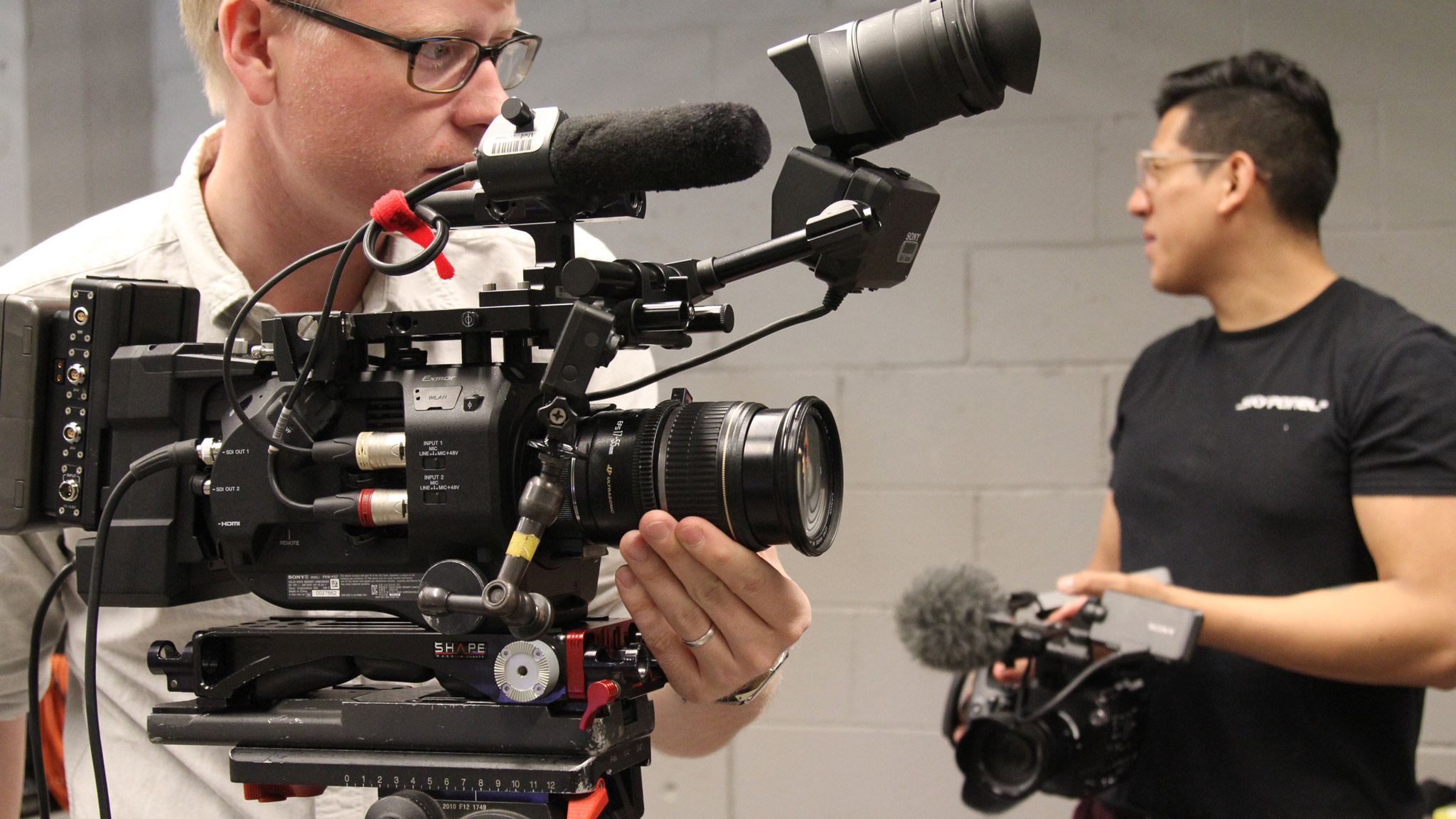
I’m not going to fool anyone into thinking that these lenses are technical equals to the heavyweights in this test. The lenses are primarily built out of plastic, so they don’t always hold up to the harsh shooting conditions we find ourselves in. The focus and zoom rings aren’t geared, requiring awkward attachments when working with a follow focus or motorized controller. The lenses are not parfocal, which means they don’t hold focus as you zoom. The lenses change their physical size when you zoom in and out, making it difficult to use with a mattebox, and the zoom mechanism isn’t smooth, since it was designed to be used on a still camera, so it’s hard to get useable in-camera zooms. The iris clicks as you make adjustments and can only be electronically controlled by the camera. The focus rings have no hard stops, so repeating focus racks can be difficult, and the focus throw is only a few degrees. So again, why did I include these lenses?
If you’ve noticed in my other lens write-ups, I often focus as much on the build and functionality of a lens as I do its technical characteristics. These lenses are no exception.
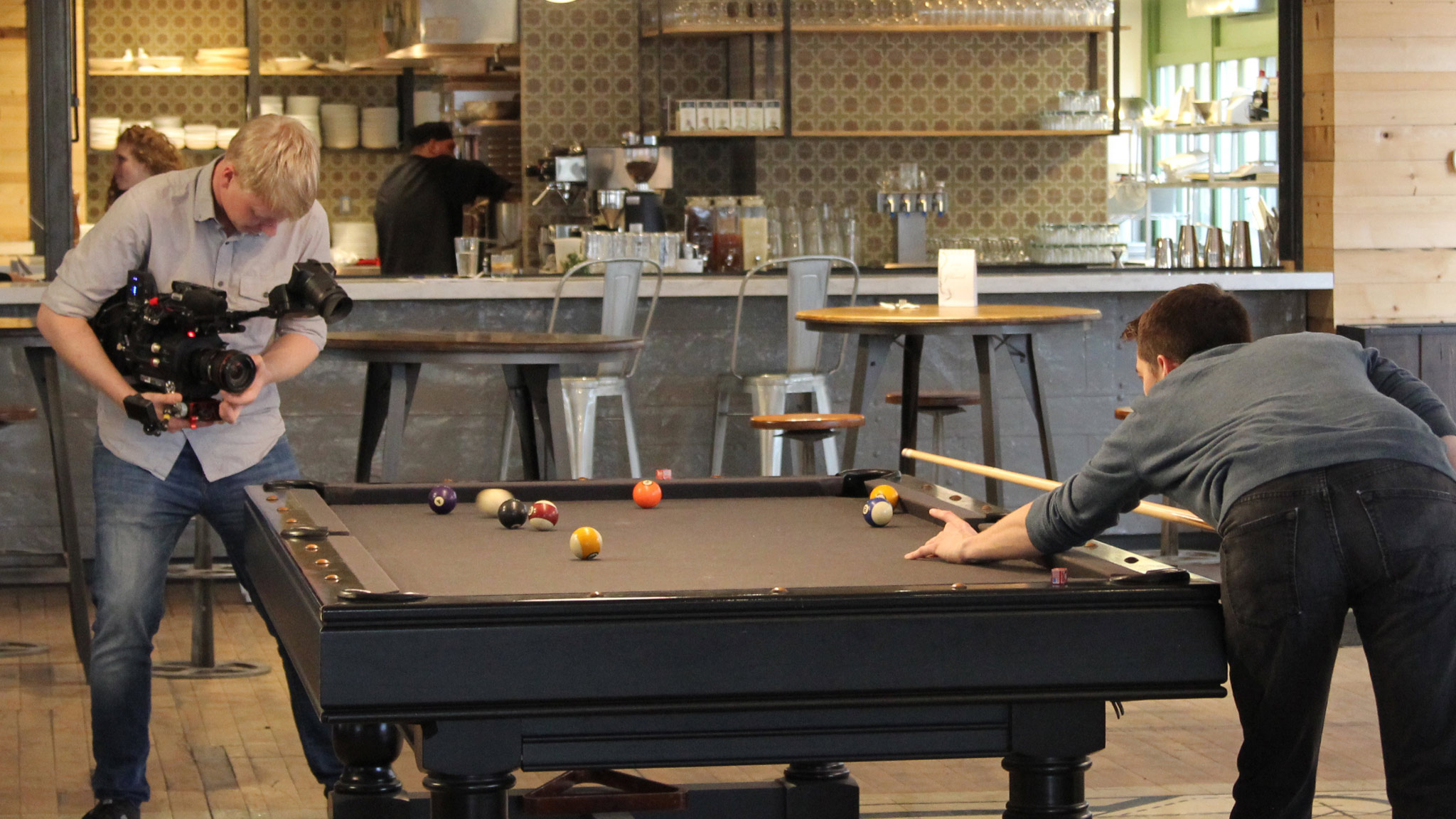
The 17-55 and 24-105 are incredibly light at 1.42 & 1.47 lbs respectively. They are also physically very small. This combination makes for a kit that can pack down into one bag, including the camera. When you are shooting alone, need to keep a low profile in sensitive shooting environments, or need to maximize space when packing, this combo of lenses makes a lot of sense.
Both the 17-55 and 24-105 are image stabilized – a godsend when shooting handheld. Because they are so light, I find IS a necessity to keep your shots stable. These lenses are always my choice when shooting in cars, even if I’m working with cinema glass for my primary coverage. I am able to easily fit inside the car and have a wide range of motion to get better coverage with the shorter, lighter lens. Having the Image Stabilization gets me shots I couldn’t possibly get with larger, heavier lenses.
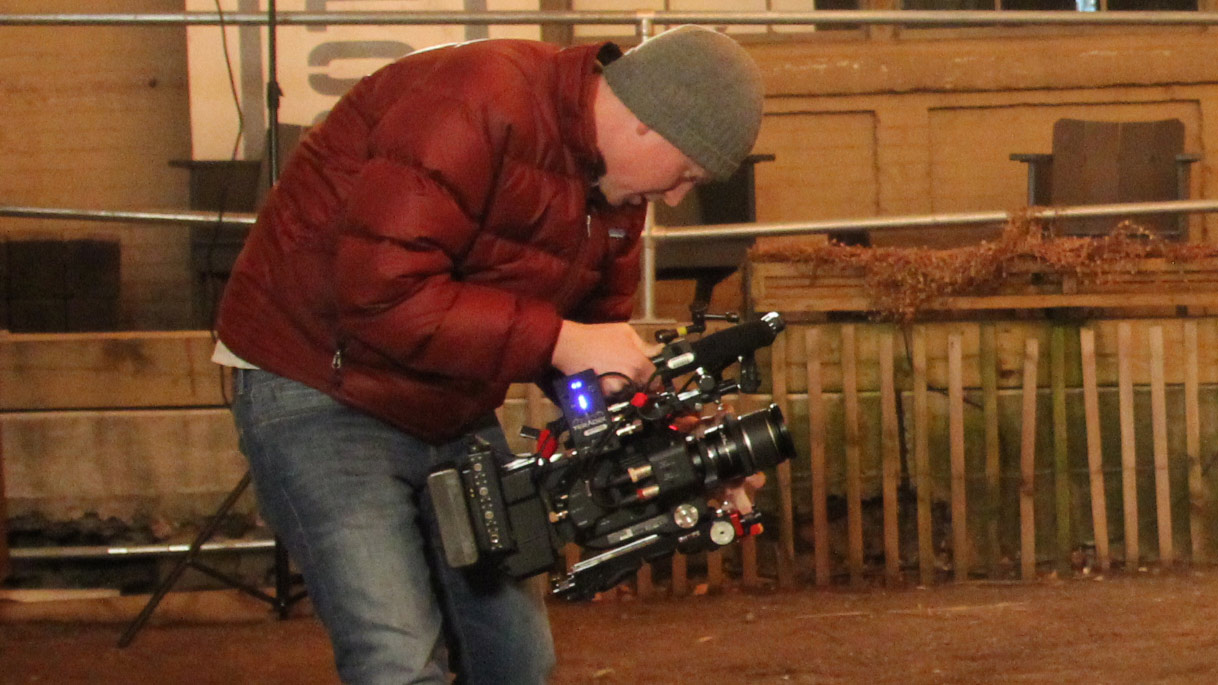
Lastly, because these lenses have clicking apertures, I choose to use them with a 77mm threaded Variable ND filter. This way, I can set my f-stop to a fixed stop (I prefer an f4), and then ride the Variable ND to get proper exposure. This is great not only for smooth aperture adjustments, but also for keeping a consistent depth of field when shooting.
GEOMETRY
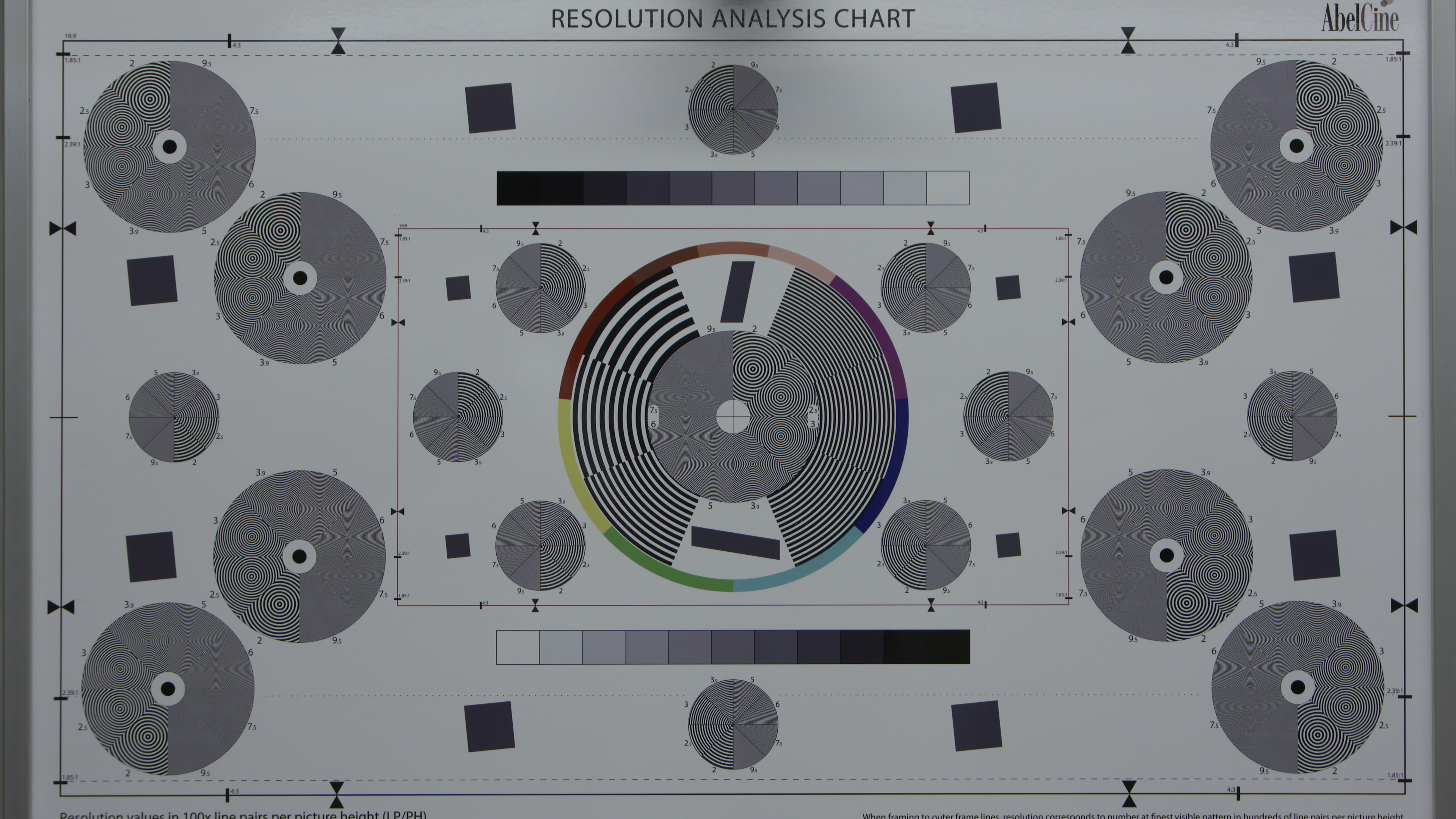
Both the 17-55 and 24-105 surprised me when looking at the lens geometry. With almost all of the lenses we tested there is some sort of distortion, either pincushion or barreling of the image. Incredibly, the 17-55 has only the slightest pincushioning and the 24-105 has perfect geometry. When looking at the 17-55 at its widest, there is minimal lens distortion, as you can see in the interview frame at 17mm. You can find full-resolution examples from both lenses here: Canon 17-55 (chart & interview frame), Canon 24-105 (chart & interview frame).
EDGE BRIGHTNESS
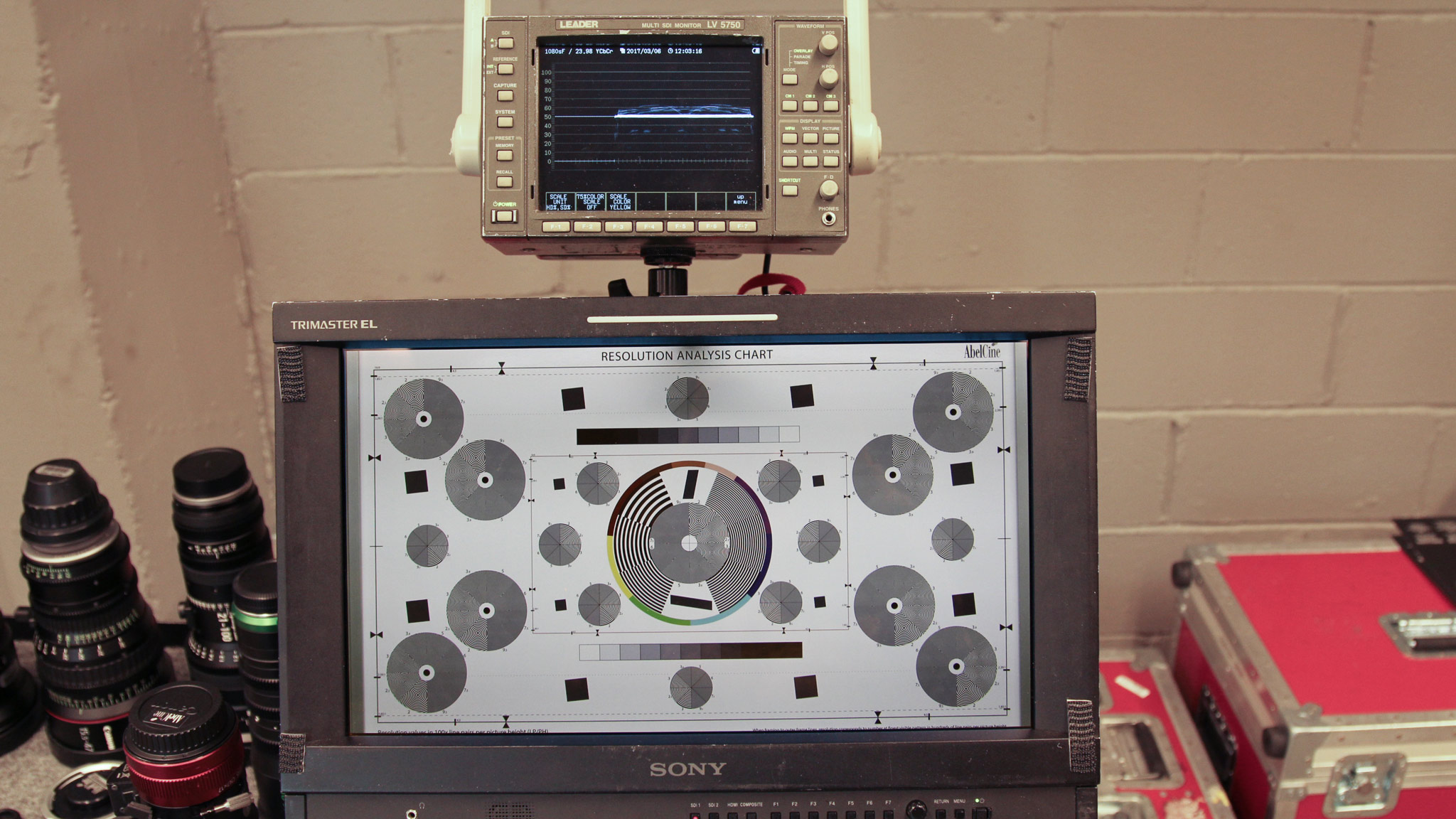
To test the edge brightness of each lens, we filmed the resolution chart at all f-stops from wide open to f11 and examined the curve of the white on a waveform monitor. With the 17-55, there is vignetting at all f-stops, but is most noticeable at f2.8. The vignetting becomes consistent from f4 and above, but never goes away entirely. With the 24-105, there is consistent, yet minimal, falloff from f4 to f8, and then at f11 the image levels out. Download screen captures of all f-stops: Canon 17-55, Canon 24-105
SHARPNESS
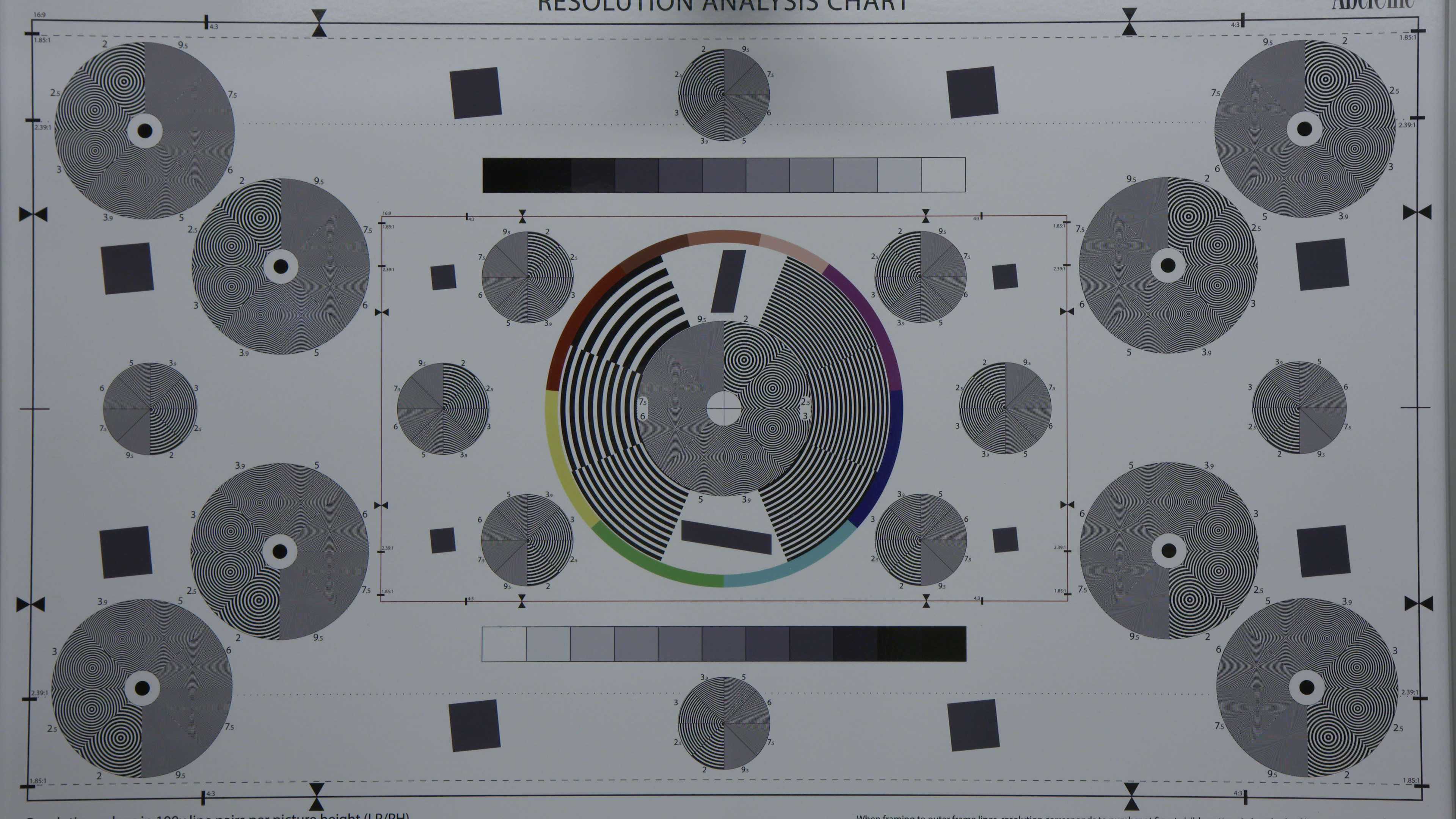
Despite being still lenses used on a video camera, these lenses are very sharp. Remember, they are designed for still photography, so most still cameras are shooting at higher resolutions than video.
The 17-55 is very sharp wide open, hitting its ideal sharpness at f5.6. The 24-105 is even sharper, being an L-series lens, and reaches its ideal at f5.6 as well. Download full-resolution screen captures for both lenses: Canon 17-55, Canon 24-105
CHROMATIC ABERRATION
If we look at the off-kilter boxes on the resolution chart, we can look for chromatic aberration, or color fringing. With the 17-55, there is the slightest amount of red fringing on the top of the boxes, but more obvious blue fringing on sides. If we check this against the interview frame, enlarged 300% at the windows, you can see apparent blue and less noticeable red fringing on the vertical sides of the window frame.
The 24-105, on the other hand, doesn’t appear to have any color fringing on the off-kilter boxes of the resolution chart, and if we check this again in the interview frame, there is no noticeable color fringing in the window panels.
COLOR
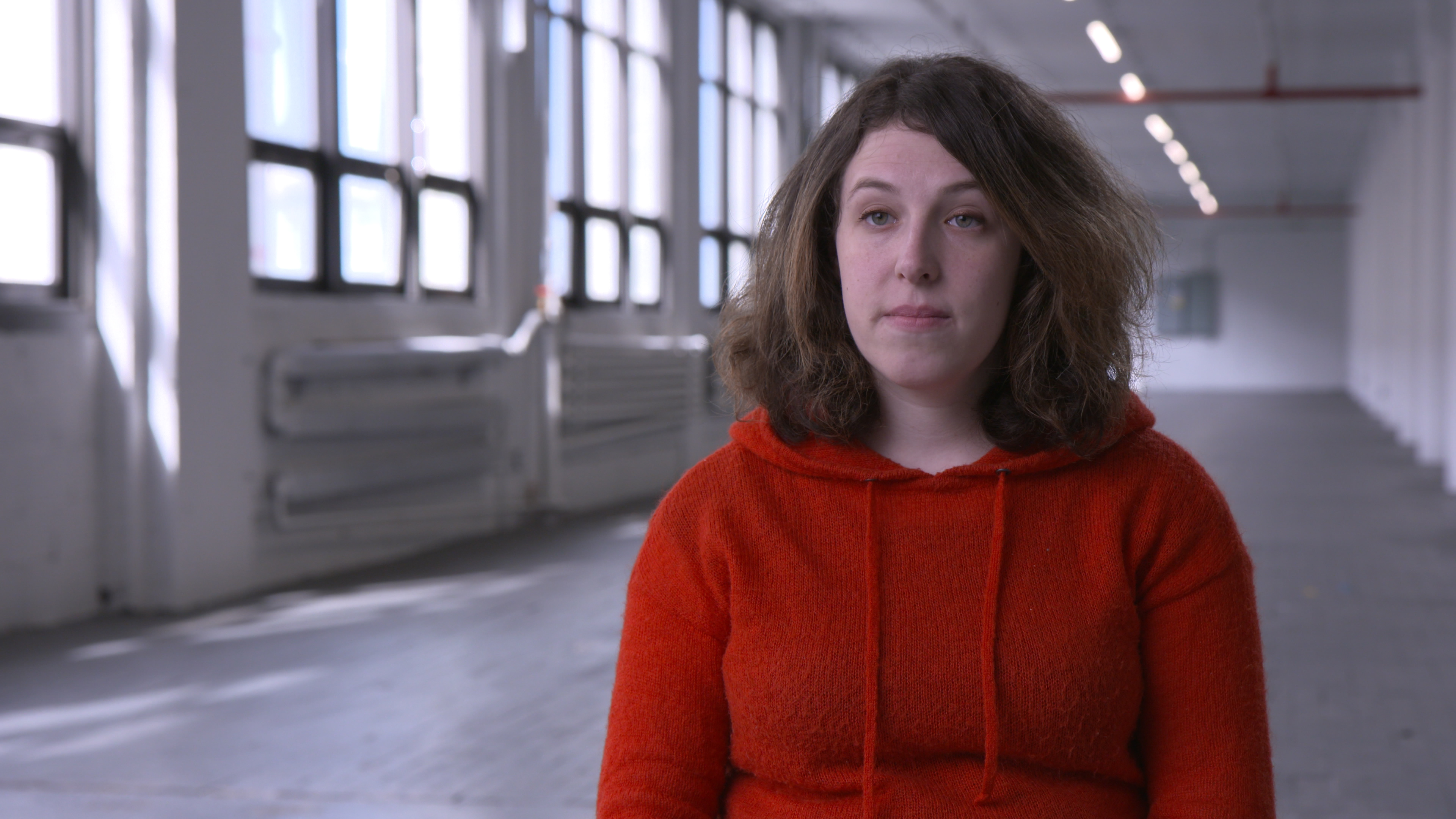
To test color, we first white balanced the camera sensor with no lens attached. This gave us a pure white from the ambient lighting in the room. We then attached the lenses and shot a white card under the same lighting conditions. This gave us an accurate read on the lens color properties. When looking at the 17-55 white card on the scopes, you can see the lens is incredibly neutral. The red, green and blue channels have almost identical saturation on the RGB waveform, and the color indicator sits squarely on the neutral crosshairs on the vectorscope. The 24-105 is also very neutral, with only the slightest reduction in blue saturation. You can see on the vectorscope that the color shifts slightly towards yellow.
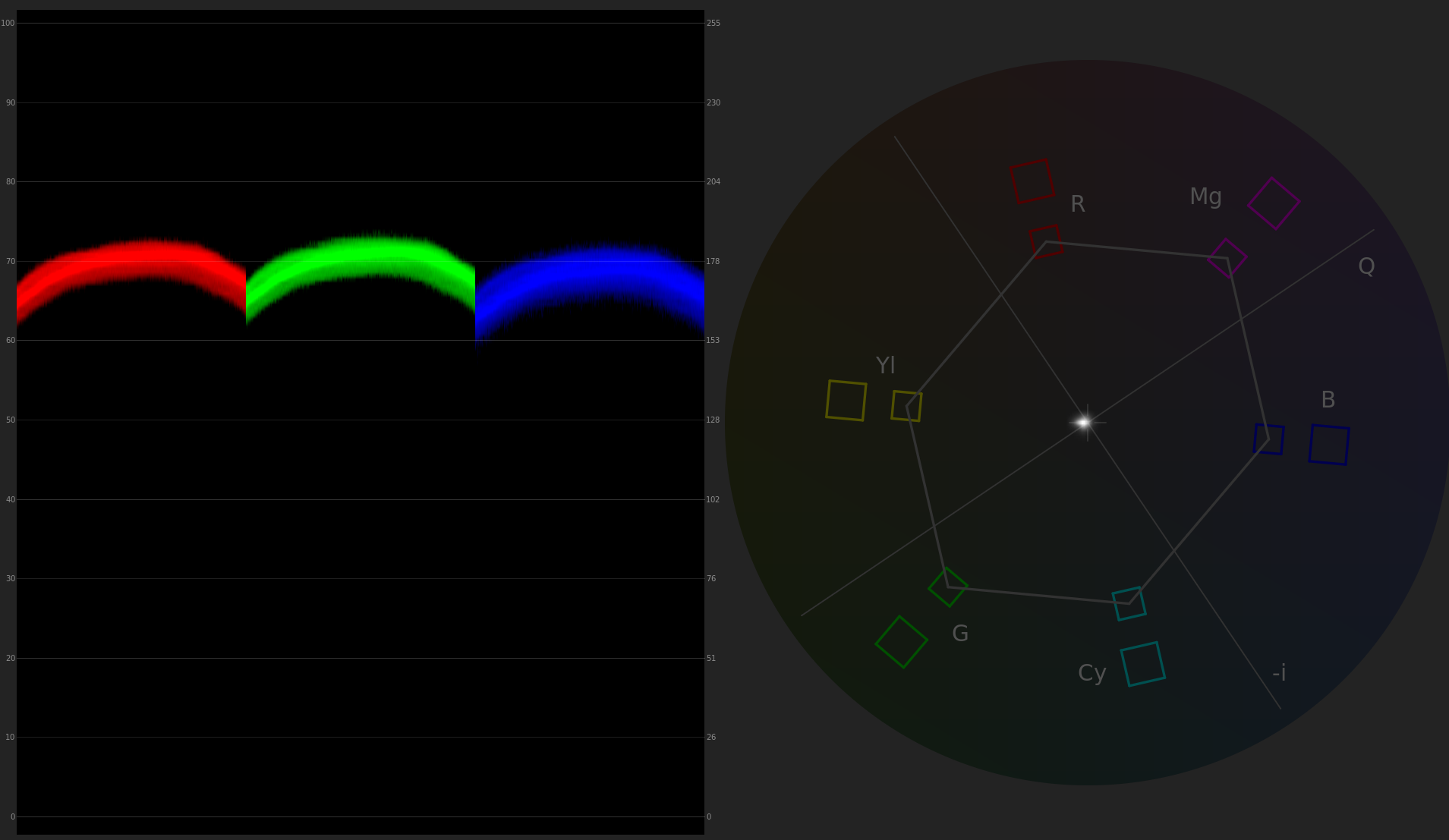
The 17-55 has lower contrast compared to the 24-105, which has a richer, sharper look to the image. This mainly has to do with the fact that the 17-55 is an EF-S lens that uses lower-grade glass and materials in their production, while the the 24-105, an L-series lens, has better coating and glass for a more professional lens build and quality. Download larger, detailed examples for both lenses: Canon 17-55, Canon 24-105
BREATHING
We tested the lenses for breathing in two different setups. The first is in the interview frame at both 35mm and 50mm. With the 17-55, there is significant breathing at both 35mm and 50mm, which you can see by the apparent “zooming” when shifting focus from foreground to background. The 24-105 doesn’t breathe as much as the 17-55, but there is still obvious breathing at both 35mm and 50mm.
The second test was at the pool table, at the wide and tight ends of the lens. With both the 17-55 and 24-105, the breathing is quite obvious at the wide end of the lens. At the tight end, I didn’t find the breathing quite as noticeable or problematic in this real-world scenario.
MINIMUM FOCUS
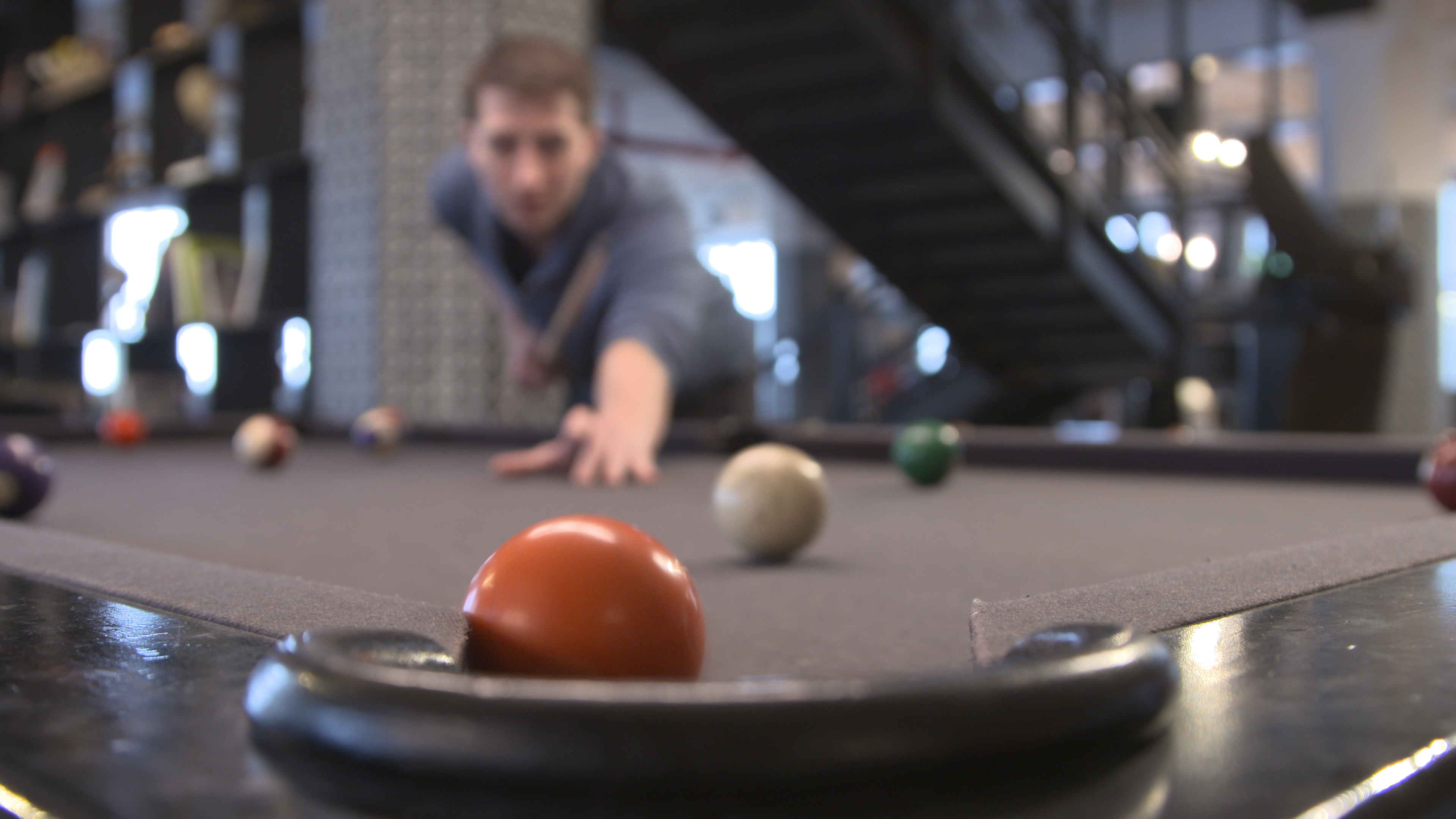
Both the 17-55 and 24-105 have an impressive minimum focus distance. The 17-55 has a minimum focus distance of 1.2’ and the 24-105’s is 1.5’. Of course, both of these lenses are much shorter than the other lenses tested, so the minimum focus distance is relative, but they both get you really close to the action.
BOKEH
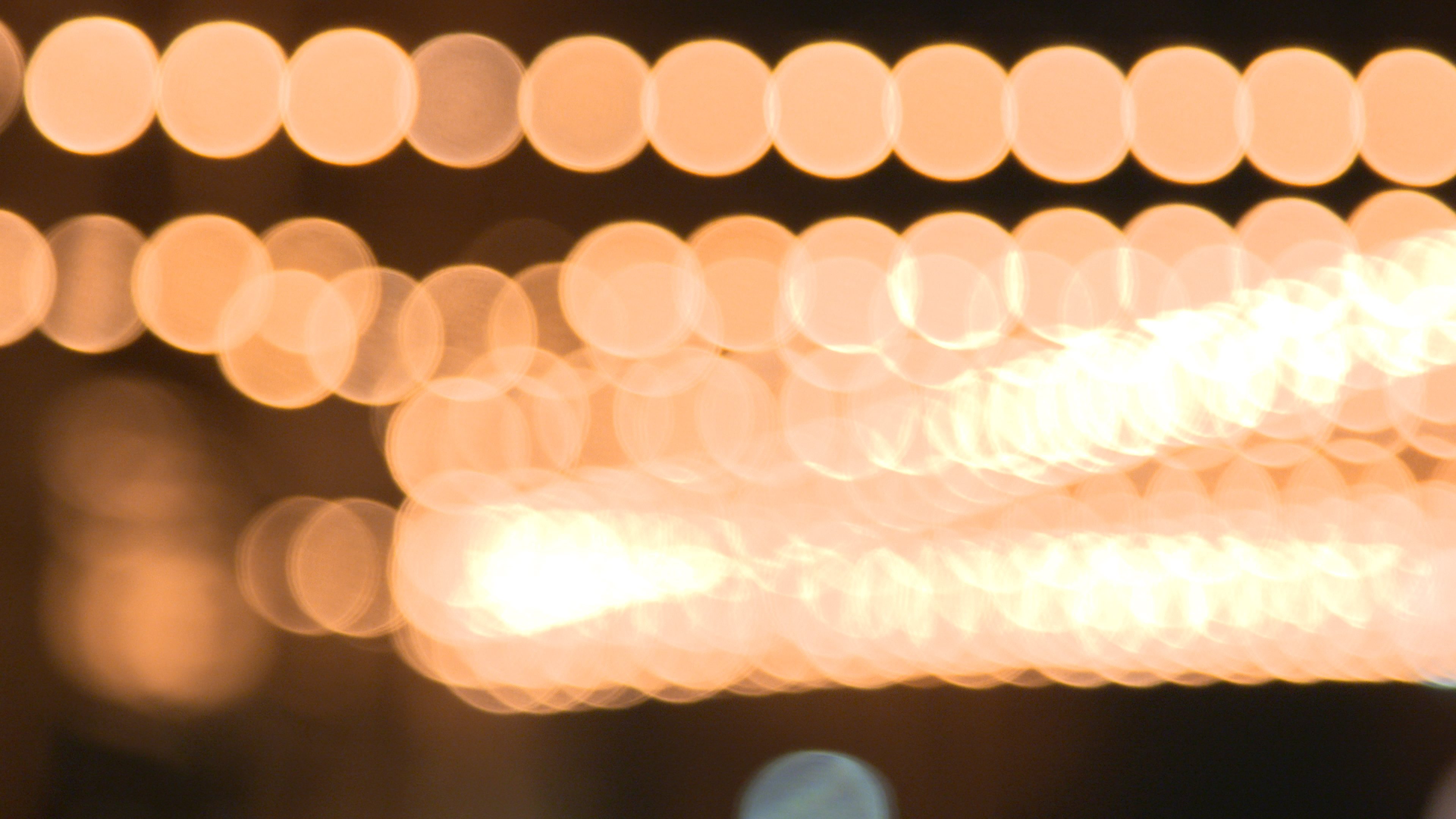
Both lenses render out of focus elements nicely. The 17-55 renders the out-of-focus cafe lights very smooth and round in the center of frame, and then they stretch and and squeeze horizontally as you get closer to the outer edges of the frame, creating slight cat-eye points on the tops and bottoms of the lights.
On the other hand, the 24-105 yields incredibly smooth and round out-of-focus elements across the entire frame, with little to no shape distortion on the outer edges like we saw with the 17-55.
LENS FLARES
The 17-55 and 24-105 are both pretty flare resistant, but because of the different coatings on the lenses, the flares are rendered slightly differently between the two. The 17-55 appears to be less flare resistant than its counterpart. Also, because the lens has lower contrast than the 24-105, the flare feels more apparent. At the wide end of the lens, the flare enters frame very early, in the shape of a large, soft halo ring. This is then followed by a bright white starring around the light, and a multitude of green conical orbs. There are multiple reflections going on inside the lens, creating a layered, multi-shaped look to the flare. In my practical experience shooting with this lens, the flare tends to give a milky cast to the image, thus reducing the contrast of the shot even further. At the tight end of the lens, there are sharp blue and purple light leaks at the beginning of the flare, followed by a blue and purple glow around the light and a few green and yellow conical orbs. Overall, the flare enters and dissipates relatively quickly.
The 24-105 is more flare resistant than the 17-55, but because of the increased contrast of the lens, the flare is more obvious when present. At the wide end of the lens, there is a sharp white starring around the light source, coupled with a yellow halo. The flare trail is made up of only a few, sharp blue conical orbs at the very end of the flare. At the tight end of the lens, there is a colorful dancing light leak of soft blues and intense purples well before a flaring trail appears. The trail is made up of very soft, round yellow orbs, with the same blue and purple glow around the light source itself.
CONCLUSION
The combination of the Canon EF-S 17-55mm and EF-L 24-105mm is a great set when you need to be lean and mean. You can pack your entire camera kit down into one case to keep a low profile and be extremely mobile. Even if you are using more substantial glass for your primary verite or interviews, these lenses come in handy when shooting in cars or other tight spaces, as well as when shooting timelapses with a DSLR while your A Cam is rocking a cinema zoom.
The 17-55 f2.8 is the perfect range for verite coverage, as well as working in lower light, while the 24-105 f4 gets those important tight shots as well as perfect coverage in an interview.
Both lenses are very sharp, holding their own against many of the other cinema zooms in the series. The color is neutral on both, while the 17-55 has lower overall contrast and the 24-105 has sharp, punchy contrast. Both lenses have noticeable breathing, but impressive minimum focus distances.
Overall, these lenses are not to be ignored, despite the impressive selection of cinema zooms on the market today.
I hope you found this lens test useful, and be sure to check out the other lenses in the Behind the Lens – A Look at Documentary Zooms series.















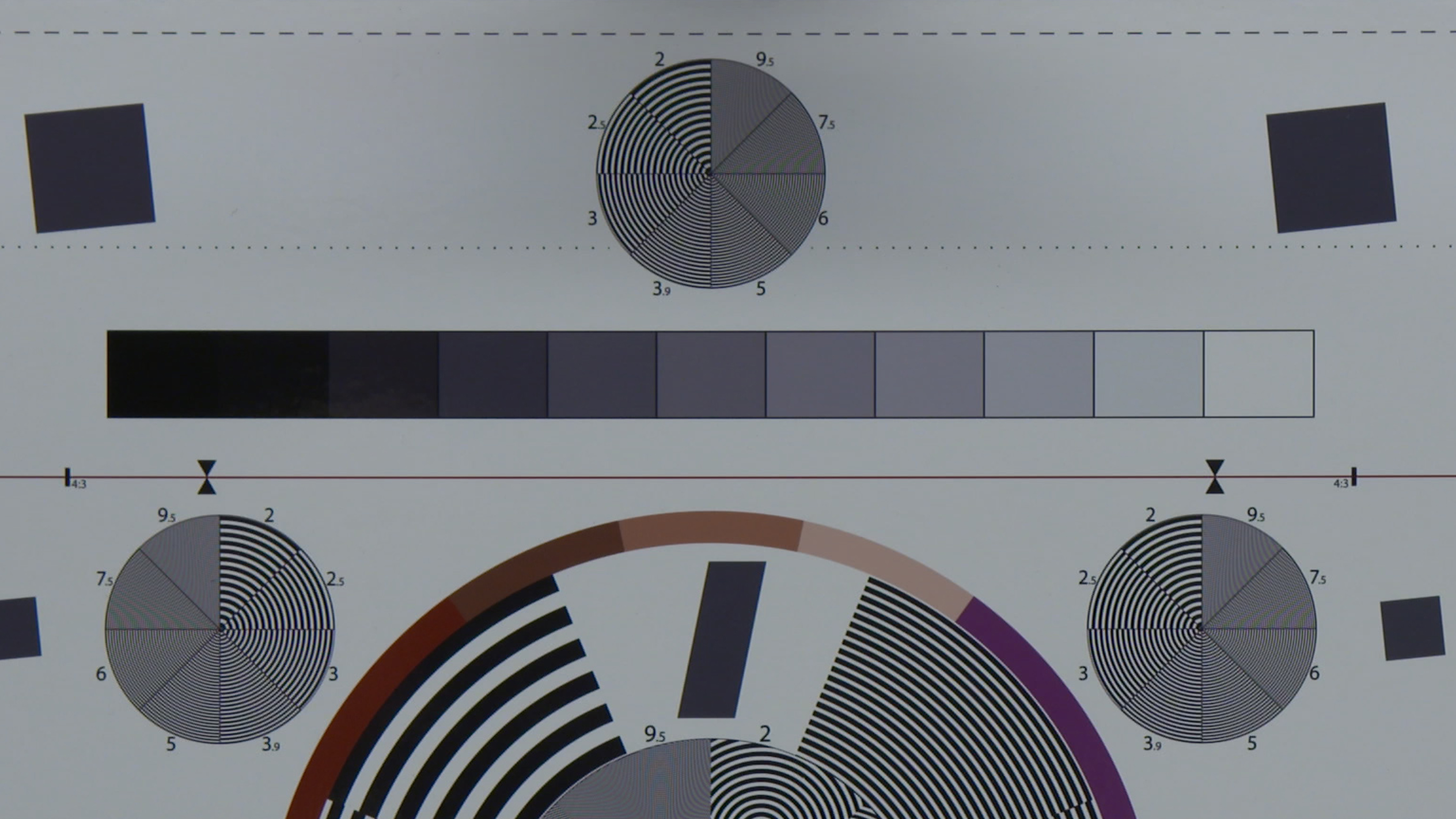



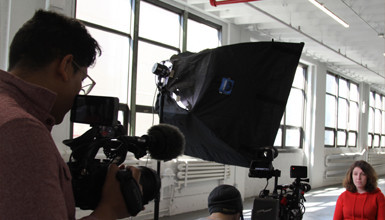

AbelCine encourages comments on our blog posts, as long as they are relevant and respectful in tone. To further professional dialog, we strongly encourage the use of real names. We reserve the right to remove any comments that violate our comment policy.
AbelCine publishes this blog as a free educational resource, and anyone may read the discussions posted here. However, if you want to join the conversation, please log in or register on our site.
We use Disqus to manage comments on this blog. If you already have a Disqus account registered under the same email as your AbelCine account, you will automatically be logged in when you sign in to our site. If not, please create a free account with Disqus using the same email as your AbelCine account.